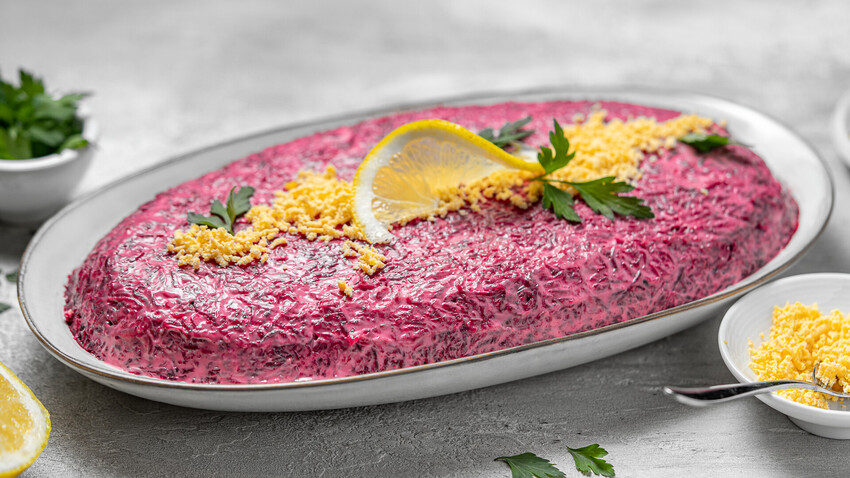
This salad is a central part of every New Year's Eve feast in Russia.
Yulia MulinoFirst of all, let’s remember that in Russia, “salads” are most often not those leafy and light starters that are common in the West. A Russian salad is almost something like a meal – rather heavy with ingredients and mayonnaise.
Now, the salad that we're going to talk about today would win not only a contest for the weirdest name, but also for the weirdest look. Meet the Russian culinary gem known as “Herring under a fur coat”.
There are various legends about how and when this salad first appeared in Russia. Some say that it was originally created by the innkeeper Aristarkh Prokoptsev who needed a cheap but hearty dish that would go well with alcohol. According to one legend, the salad was created in 1918 - 1919 shortly after the Bolsheviks came to power and was full of political and social symbols. For example, the top layer of beets was associated with the red Soviet flag and socialist Revolution, while the herring represented the workers. According to another legend, “Herring under a fur coat” salad was a jazzed up version of vinaigrette salad.
Only much later, in the 1970s, did “Herring under a fur coat” gain popularity among the Soviet masses; this was an era marked by a peak in culinary fashion for mayonnaise salads. Along with perennial favorites such as Olivier and crab salads, “Herring under a fur coat” became one of the symbols of the New Year's table.
Despite the variations, the base of this dish consists of herring, potatoes, carrots and beets. The order of the layers can slightly alternate, but the main thing is that the herring remains at the very bottom, and the beet must be placed on top.
This salad is quite simple, but there are a number of nuances on which the flavor and structure of the dish will depend.

The most important thing is, of course, the herring itself. It is better to take a barreled herring from the brine. Spicy herring is recommended.
If the fish is sold whole, then you should take time to clean it and remove the bones. If the fish is too salty, it should be soaked in milk. I used lightly salted Dutch herring. It is already sold shredded.
There are debates about what can be called the classic version of “Herring under a fur coat”. The two main opposing views wrangle over the use of egg in the recipe. The egg makes the salad more tender, but also makes it heavier, as it already has mayonnaise.
Onions are also a fan favorite. But in my opinion it is necessary to include, as in all dishes with herring. If you are put off by the pungent and sharp taste of the onion, then you can scald it with boiling water and pre-marinate it in vinegar.
Another ingredient that can enrich the flavor is a sour apple. There are also versions with fried mushrooms, onions and cheese. But they can significantly change the flavor of your “Herring under a fur coat”.
Boil the vegetables in their skin. Try to choose vegetables of the same size, so that they will be ready at the same time. You can boil beet roots separately as they are often bigger than potatoes or carrots, and take longer to be cooked. Do not overcook them; the vegetables should retain their shape, so that it will be easier to grate them on a grater. Once the vegetables are ready, place them in cold water to make it easier to peel them.
This is not crucial and depends on your personal preference, but it may affect the final taste. The herring itself should be cut into small pieces or cubes. For a more delicate consistency, use a fine grater. But traditionally, the vegetables are rubbed on a coarse grater.
The original recipe suggests that the herring should lie at the bottom of the dish. Next, the order is as follows: potatoes, onions, eggs, carrots, and beets. Each layer is smeared with mayonnaise. I prefer to put the onion immediately on the herring. There is a multilayer version, where the layers are repeated, and where the herring itself lies on a layer with potatoes.
Usually this salad is laid out on a wide flat dish, possibly oval in shape. But you can place the layers in a slotted mold, and make the salad look like a cake, showing the layers. You can arrange the layers in individual transparent cups. You can also use a large deep transparent bowl.
Last but not the least, factor in the ‘resting time’ that the salad needs to infuse. After a couple of hours, the layers will absorb the mayonnaise and be filled with each other's flavors.

1. Cover the vegetables and eggs with cold water, and put them on the stove. Boil or bake beets separately.
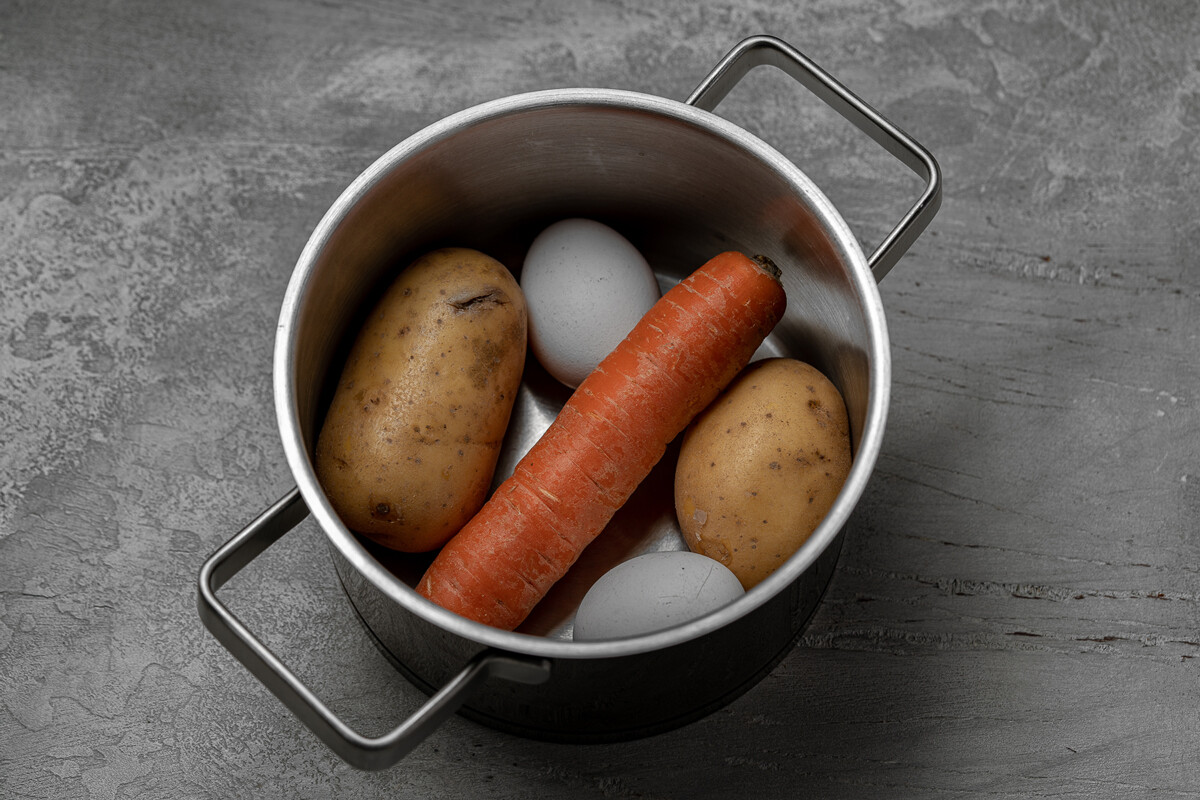
2. The eggs will be ready earlier. You need to pour cold water over them and let them cool down.

3. Chop the onion finely.
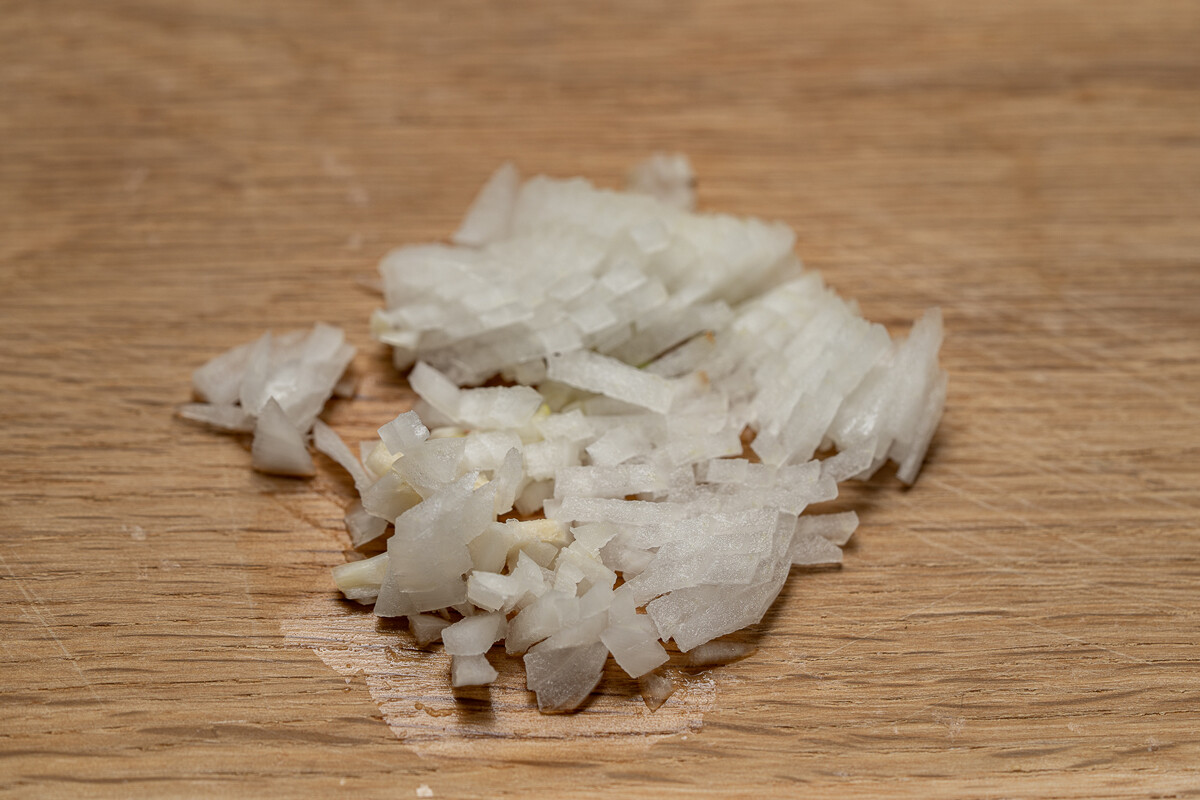
4. Scald it with boiling water, drain it.

5. Pour vinegar over it again. This will make the onions less pungent.
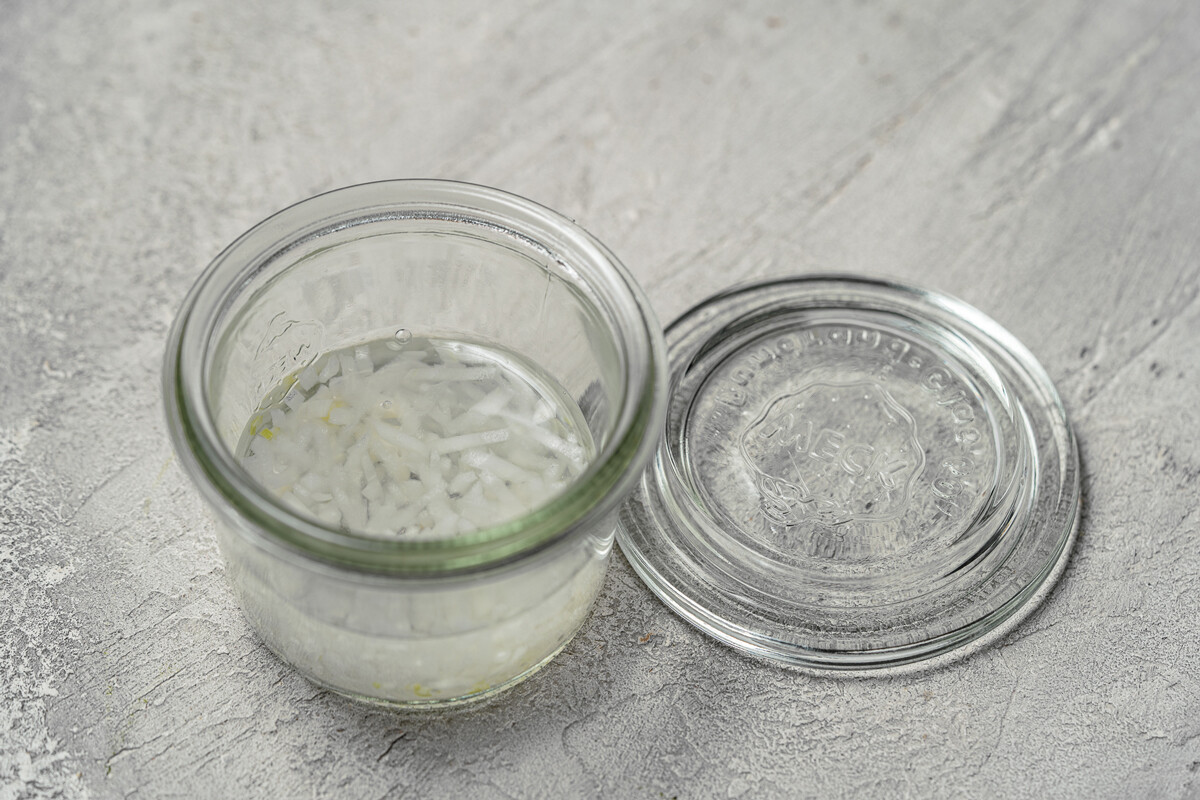
6. When the vegetables are ready, they will be easily cut with a knife, but won’t fall apart. Pour cold water over them.
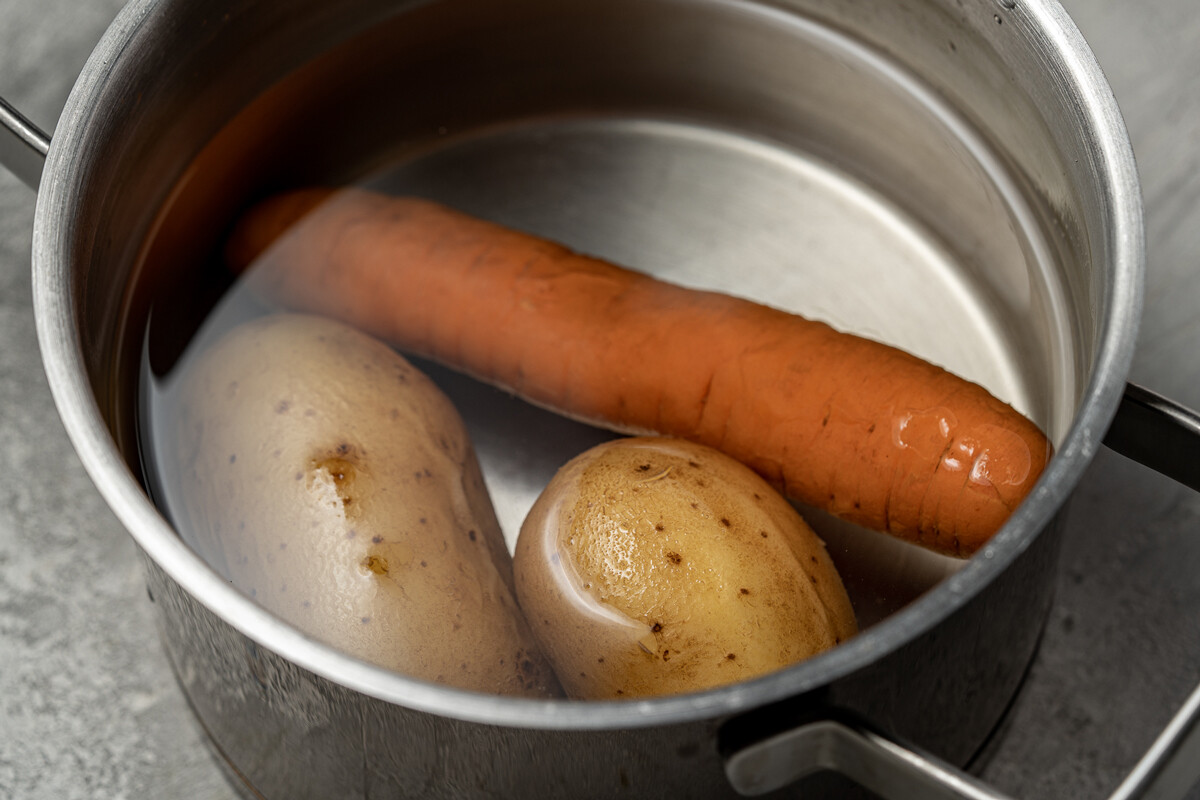
7. Cut the herring into small pieces. If the herring is whole, it should be peeled from the skin, starting from the tail. Take out the insides, remove the head and backbone. Divide it into two pieces and carefully remove the bones.

8. Place the pieces tightly on the bottom of the dish.
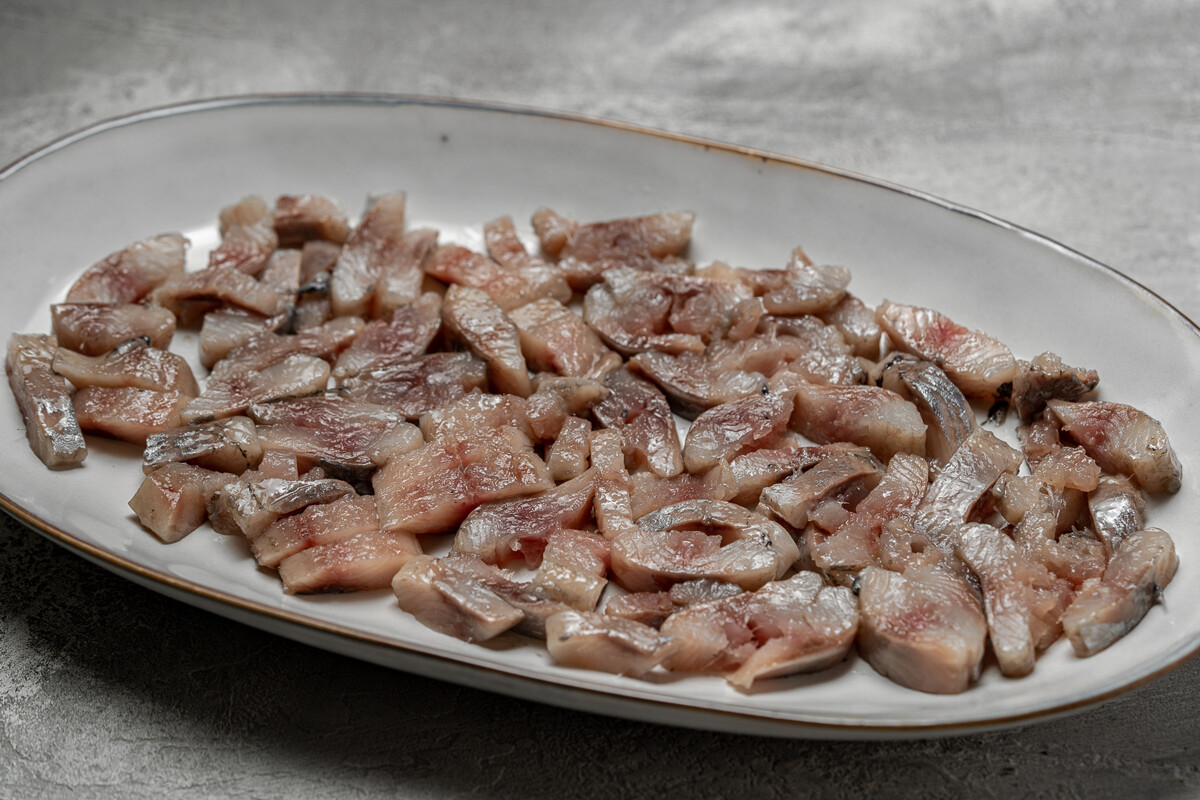
9. Add the onions.
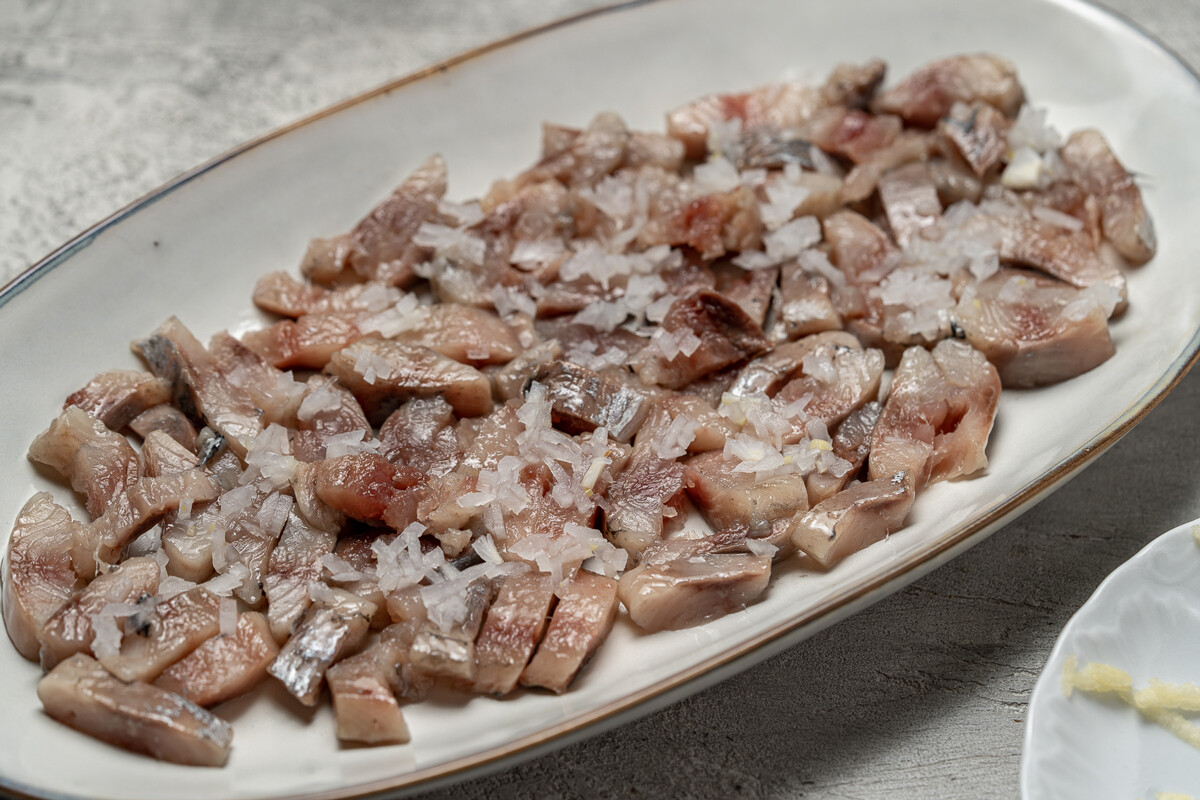
10. Then grate the apple. (Or skip this and the next step if you prefer a traditional version of the salad).

11. Next, put it on top and smear it with mayonnaise.
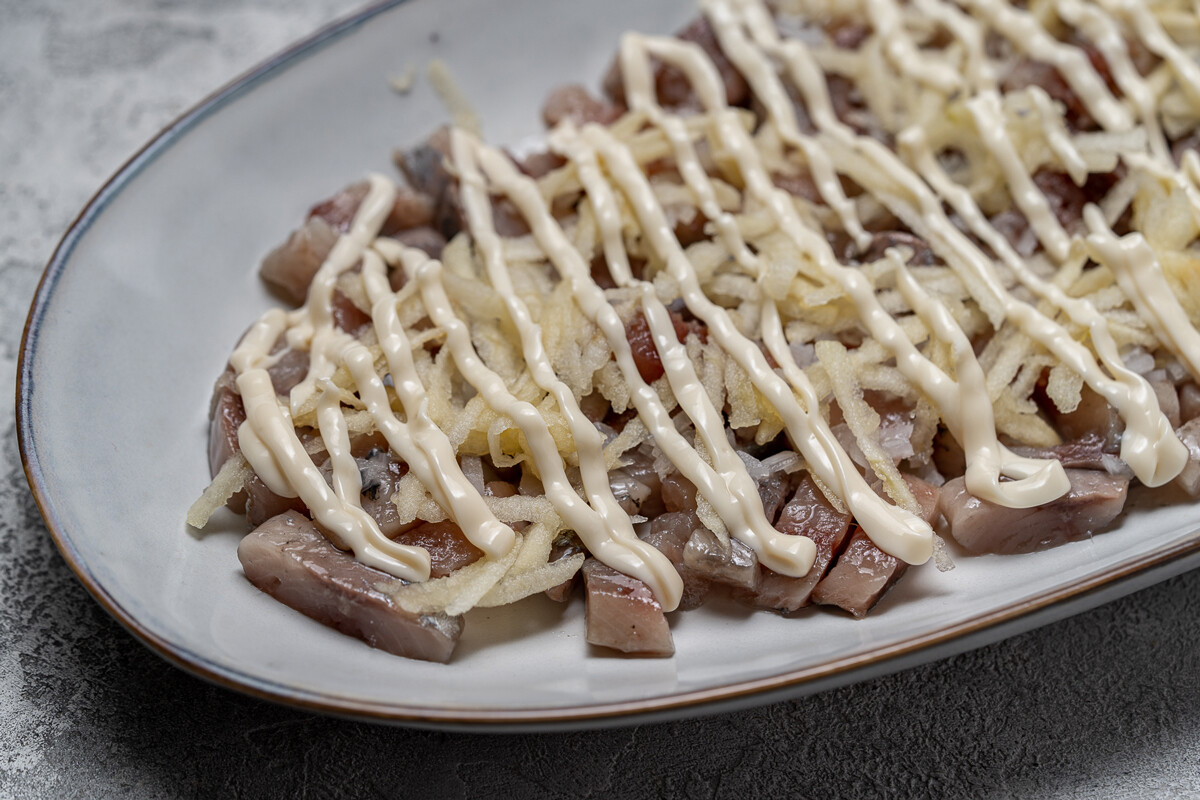
12. I put the mayonnaise in a bag to make it easier to apply it evenly on each layer.

13. Grate the egg on top and smear with mayonnaise.
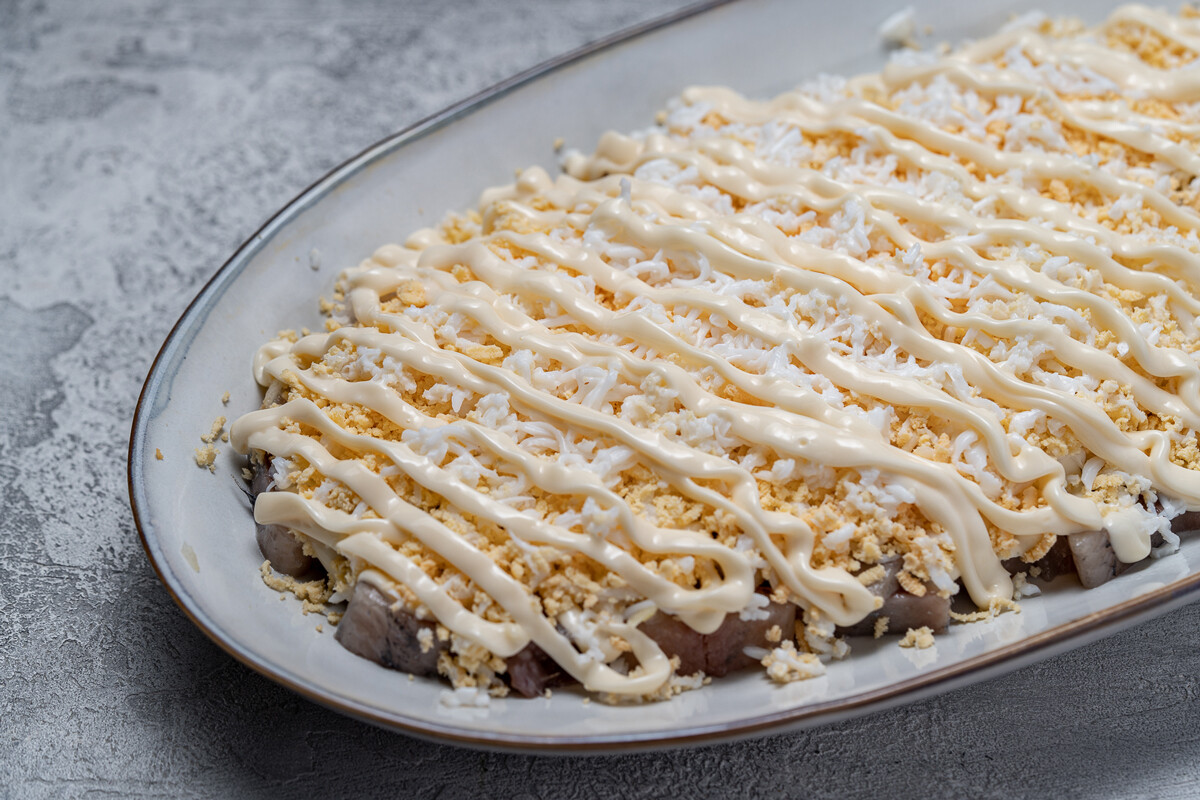
14. Add potatoes and mayonnaise.

15. Carrots and mayonnaise. Adjust the thickness yourself.

16. At the end add the beets.
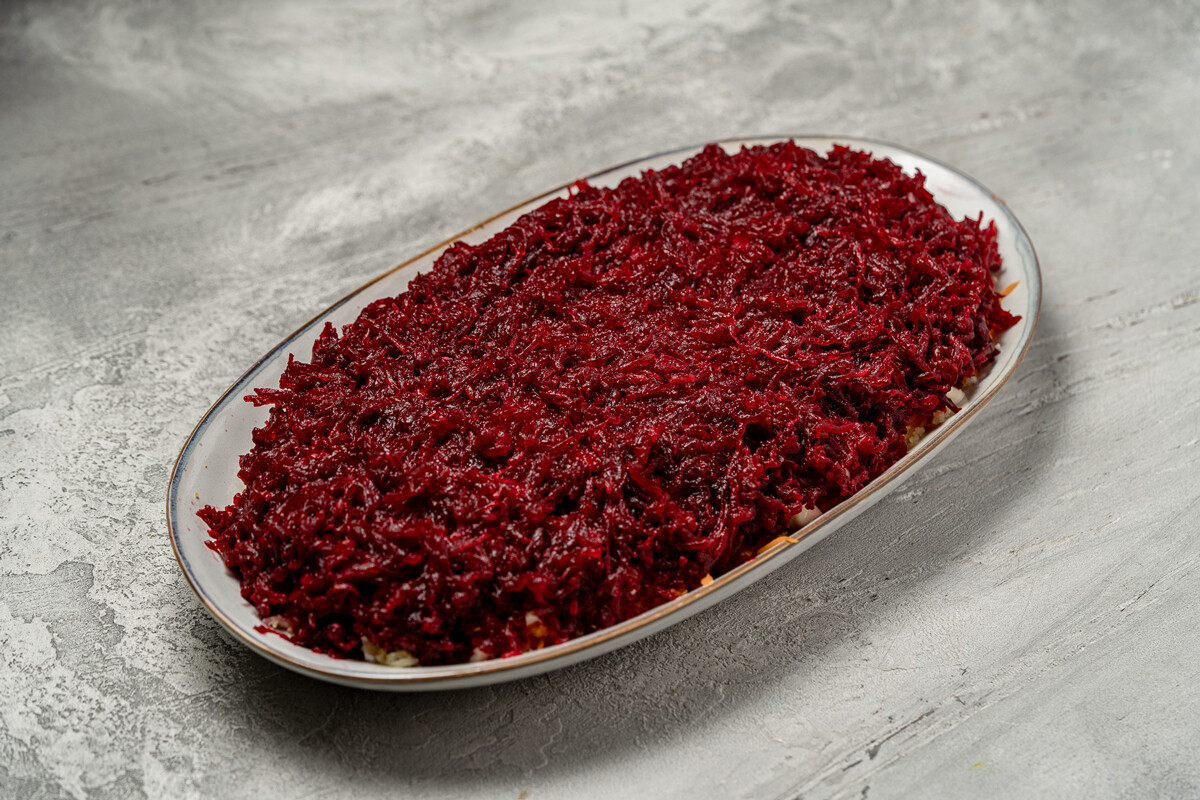
17. Coat this layer more thoroughly.

18. Decorate with egg yolk, lemon and parsley as desired and let stand for a few hours.
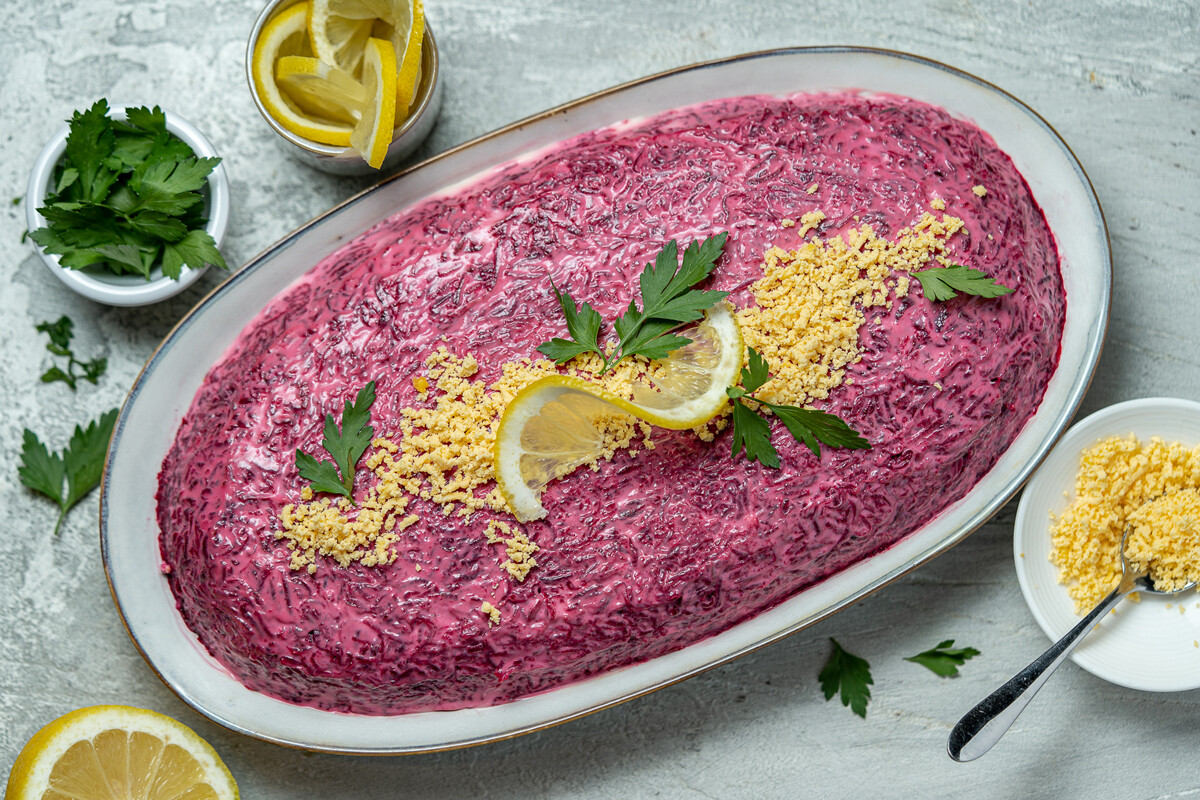
19. Enjoy!
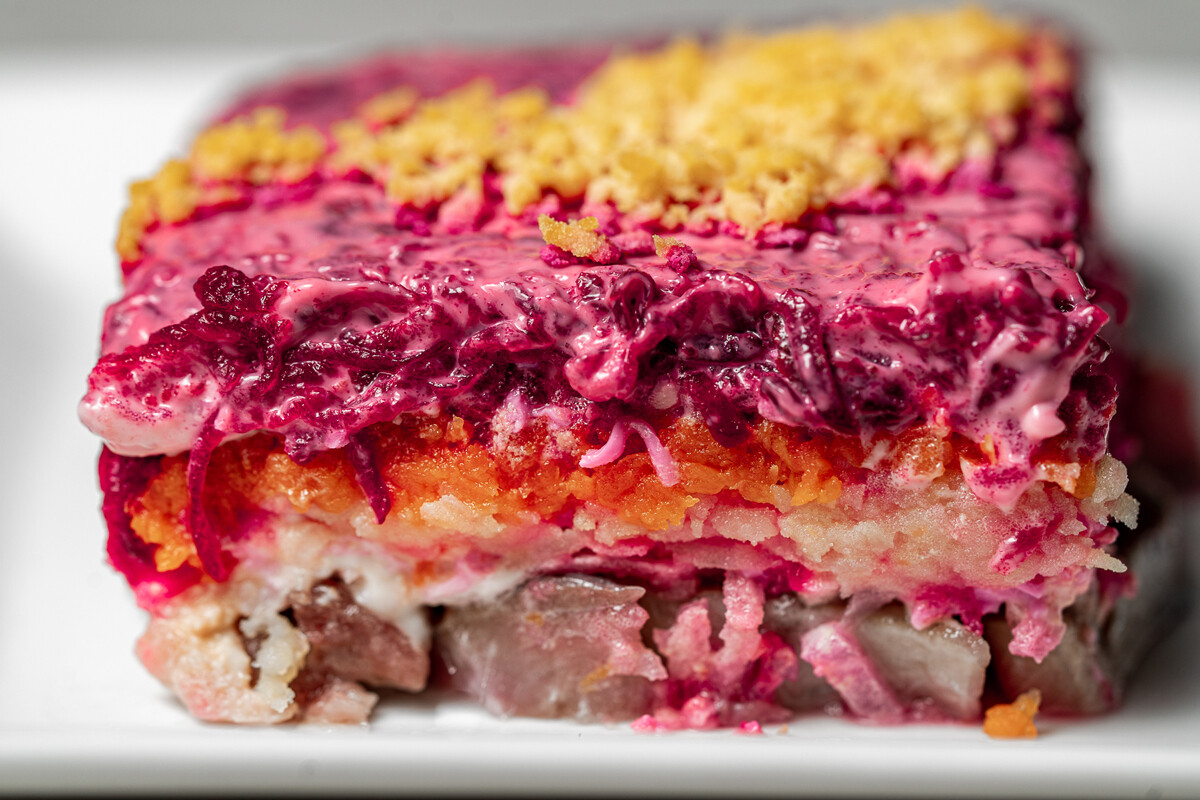
Dear readers,
Our website and social media accounts are under threat of being restricted or banned, due to the current circumstances. So, to keep up with our latest content, simply do the following:
Subscribe to our Telegram channels: Russia Beyond and The Russian Kitchen
Subscribe to our weekly email newsletter
Enable push notifications on our website
Install a VPN service on your computer and/or phone to have access to our website, even if it is blocked in your country
If using any of Russia Beyond's content, partly or in full, always provide an active hyperlink to the original material.
Subscribe
to our newsletter!
Get the week's best stories straight to your inbox